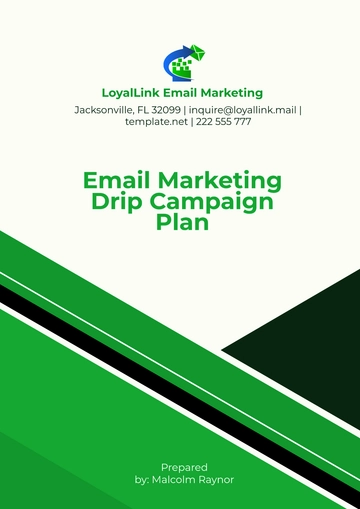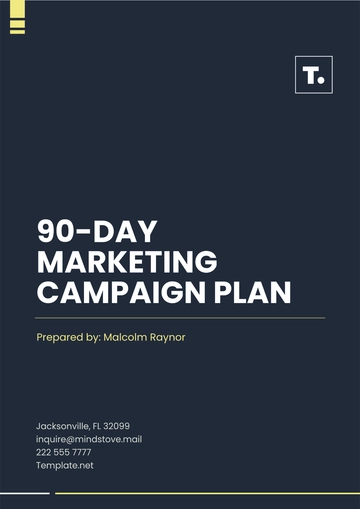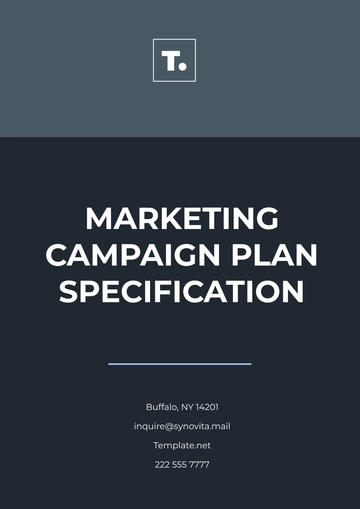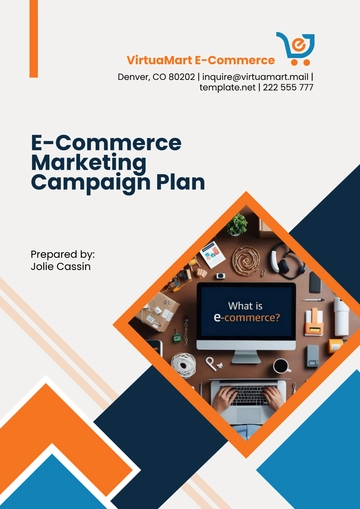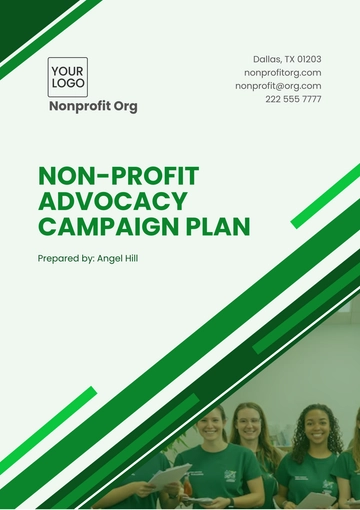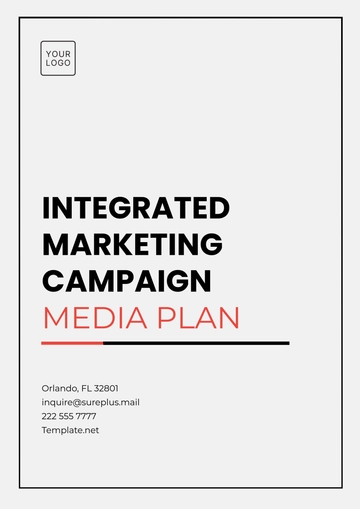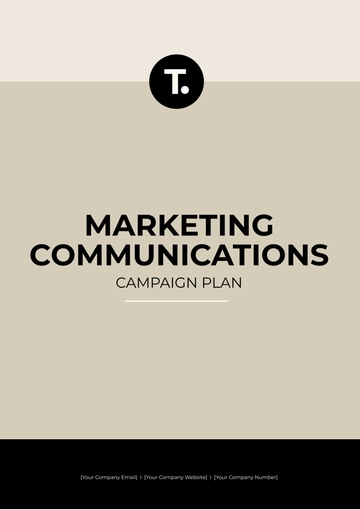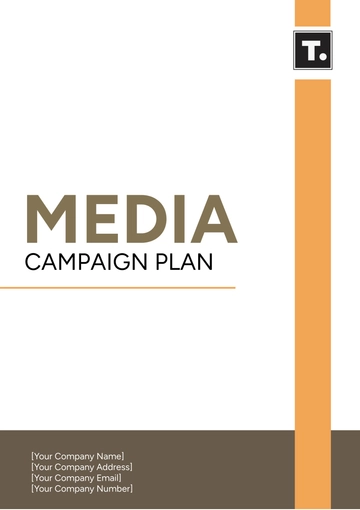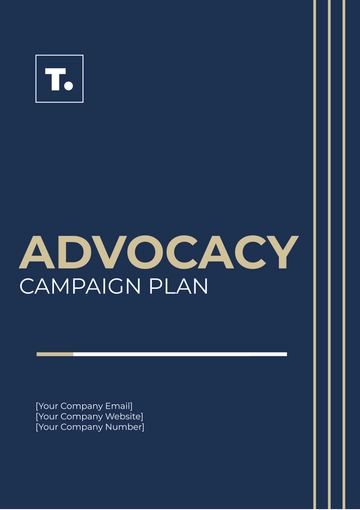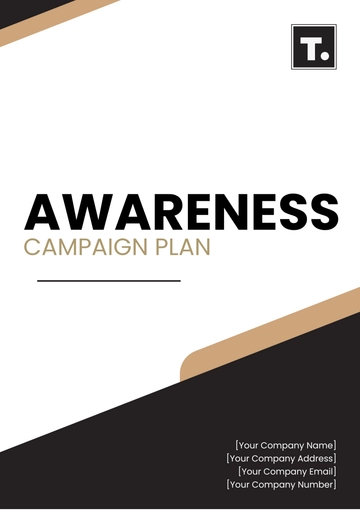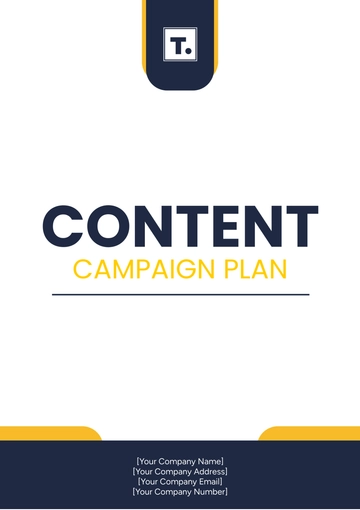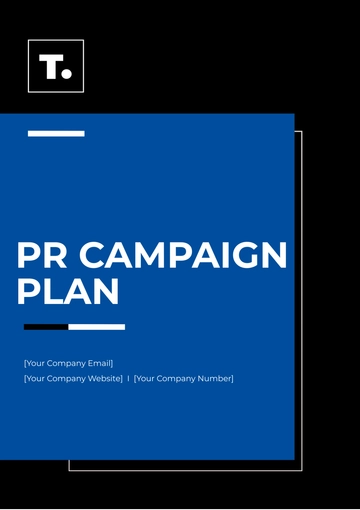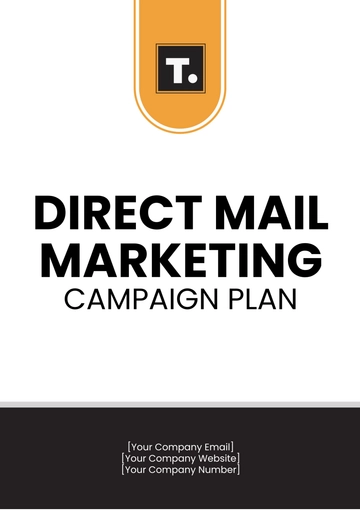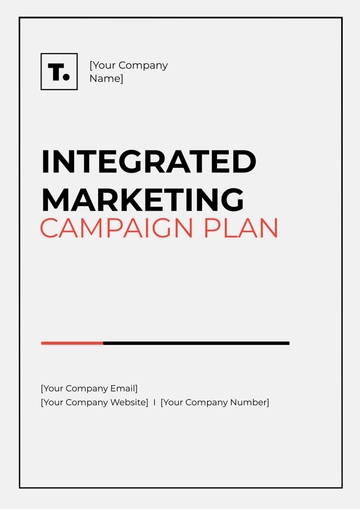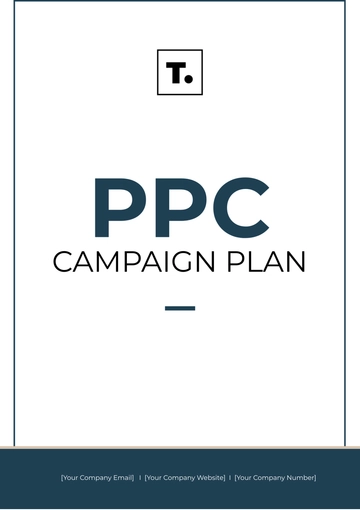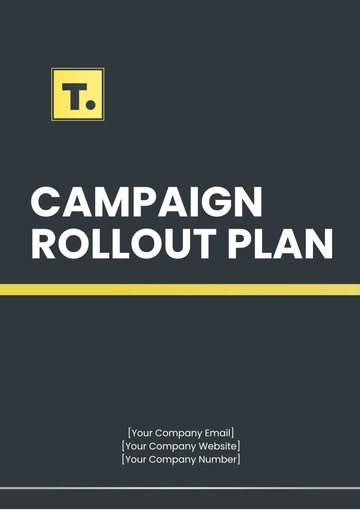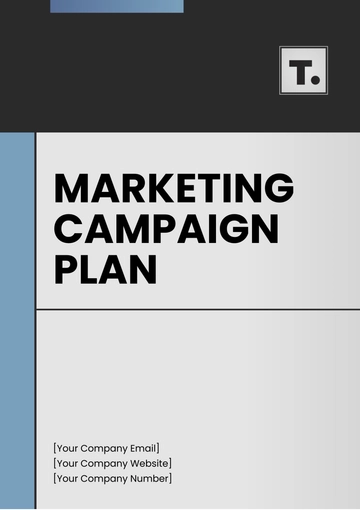Free Non-Profit Advocacy Campaign Plan

I. Introduction
At [Your Company Name], our commitment to driving social change is at the core of our mission. This Non-Profit Advocacy Campaign Plan outlines our strategic approach to promoting critical issues that align with our values and objectives. Through this campaign, we aim to raise awareness, engage stakeholders, and drive actionable outcomes that support our cause. Our advocacy efforts are designed to mobilize community support and influence policy decisions, leveraging our resources and expertise to create a meaningful impact.
In an increasingly complex landscape, it is essential for non-profits to navigate legal and regulatory requirements effectively. This plan ensures compliance with US standards and best practices, providing a structured framework for our advocacy activities. By focusing on clear goals, targeted messaging, and robust engagement strategies, [Your Company Name] is poised to make a significant difference. Our approach integrates strategic planning, stakeholder engagement, and performance evaluation to ensure that our campaign not only resonates with our audience but also achieves measurable results.
II. Goals and Objectives
The success of our advocacy campaign hinges on clear and actionable goals. In this section, we define our primary objectives to ensure that every effort is aligned with our mission and delivers tangible outcomes. By outlining our goals, [Your Company Name] sets a roadmap for strategic action, ensuring that our campaign not only raises awareness and mobilizes community support but also drives meaningful policy change and secures essential funding and resources. Each objective is designed to address key aspects of our advocacy efforts, providing a focused approach to achieving our overarching mission.
Our campaign's primary goals and objectives are:
Raise awareness about our cause
Engage and mobilize community support
Influence policy change
Secure funding and resources
III. Target Audience
To effectively advance our advocacy campaign, identifying and understanding our target audience is crucial. At [Your Company Name], we have delineated four key segments that are essential to our strategy:
1. Community Members: Engaging local community members is foundational to our campaign. These individuals are directly impacted by the issues we address and can play a vital role in amplifying our message. Our approach involves reaching out through local events, social media, and grassroots initiatives to build a strong, informed base of support. By fostering community involvement and mobilizing grassroots advocacy, we can drive significant local impact and encourage collective action.
2. Policy Makers and Legislators: Influencing policy change requires strategic engagement with policymakers and legislators. These stakeholders have the authority to shape laws and regulations that align with our advocacy goals. Our campaign will include targeted communication strategies, such as policy briefs, meetings, and testimony, to present our case effectively. Building relationships with key decision-makers and providing them with compelling evidence and solutions will be central to driving legislative action and policy reform.
3. Media Organizations: Media organizations are pivotal in shaping public perception and disseminating information. Our campaign will involve cultivating relationships with journalists, bloggers, and media outlets to ensure broad coverage of our issues. By crafting compelling press releases, op-eds, and media pitches, we aim to secure media attention that highlights our cause and reaches a wider audience. Effective media engagement will help to elevate our message and generate public interest and support.
4. Potential Donors and Volunteers: Securing financial and volunteer support is critical for sustaining our advocacy efforts. Our campaign will target individuals and organizations that have a vested interest in our cause and can provide resources or time. We will employ strategies such as fundraising events, direct appeals, and volunteer drives to engage potential donors and volunteers. By demonstrating the impact of their contributions and fostering a sense of community involvement, we aim to build a robust network of supporters who are committed to our mission.
Each of these target audiences plays a unique role in our campaign, and our strategies will be tailored to effectively reach and engage them, ensuring a comprehensive and impactful advocacy effort.
IV. Key Messages
Effective communication is essential for the success of our advocacy campaign. At [Your Company Name], we have developed a set of key messages tailored to resonate with our target audience and drive engagement. These messages are crafted to highlight the significance of our cause, encourage involvement, and clearly articulate the changes we seek to achieve. Here are the core elements of our messaging strategy:
1. The Importance of Our Cause and Its Impact: Our primary message emphasizes the critical nature of our cause and its far-reaching impact on the community and society at large. By conveying the urgency and relevance of the issues we address, we aim to build a compelling case for support. We will outline the challenges faced, the gaps in current solutions, and the potential benefits of our advocacy efforts. This message is designed to generate empathy, raise awareness, and inspire action by illustrating the positive change that can be achieved through collective effort.
2. How Individuals Can Get Involved: Engagement is key to driving our campaign’s success. We provide clear, actionable steps for individuals who wish to contribute to our cause. This includes information on volunteering opportunities, participating in events, spreading the word through social media, and other forms of grassroots involvement. By making it easy for people to understand how they can contribute, we empower them to take meaningful actions that support our mission. This message reinforces the idea that every individual’s participation is valuable and can make a significant difference.
3. The Specific Changes We Are Advocating For: To ensure our campaign is focused and effective, we articulate the specific policy changes or actions we are advocating for. This message details the proposed solutions, legislative measures, or organizational reforms that we seek to implement. By presenting a clear and detailed call to action, we provide a roadmap for achieving our goals and mobilize supporters around a common objective. This message is crucial for aligning efforts and driving targeted advocacy activities.
4. Success Stories and Testimonials: Highlighting success stories and testimonials adds credibility and personalizes our message. We share stories of individuals or communities who have benefited from similar advocacy efforts, demonstrating the tangible impact of our work. Testimonials from supporters, beneficiaries, and experts help to build trust and illustrate the real-world implications of our campaign. This message serves to inspire and motivate others by showcasing the positive outcomes of our advocacy and the difference it makes in people’s lives.
By effectively communicating these key messages, [Your Company Name] aims to engage our audience, drive participation, and achieve our advocacy goals.
V. Strategies and Tactics
To effectively achieve the goals outlined in our advocacy campaign, [Your Company Name] will implement a range of targeted strategies and tactics. This section details our approach to engaging the community, reaching the media, leveraging social media, influencing policymakers, and securing funding. By employing these strategic actions, we aim to maximize our impact and drive meaningful progress towards our advocacy objectives.
To achieve our campaign goals, we will employ the following strategies and tactics:
Strategy | Tactic |
|---|---|
Community Engagement | Host town hall meetings, workshops, and webinars |
Media Outreach | Issue press releases, arrange interviews, and write op-eds |
Social Media Campaigns | Utilize platforms like Facebook, Twitter, and Instagram for awareness |
Lobbying Efforts | Meet with legislators, provide policy briefs, and testify at hearings |
Fundraising Initiatives | Organize fundraising events and online donation drives |
VI. Timeline
A well-structured timeline is vital for the successful execution of our advocacy campaign. The following table outlines the key milestones and activities scheduled throughout the campaign. By adhering to this timeline, [Your Company Name] will ensure that each phase of the campaign is executed efficiently, allowing us to track progress and make necessary adjustments. The table provides a clear roadmap of our planned activities and their respective timeframes.
The timeline for our campaign includes the following milestones:
Month | Activities |
|---|---|
Month 1 | Campaign planning and resource allocation |
Month 2-3 | Community engagement and media outreach |
Month 4-5 | Social media campaigns and lobbying efforts |
Month 6 | Fundraising initiatives and campaign evaluation |
VII. Evaluation
To measure the effectiveness and impact of our advocacy campaign, [Your Company Name] will implement a comprehensive evaluation framework. This approach ensures that we can assess our progress, identify areas for improvement, and demonstrate the success of our efforts. Our evaluation will be based on the following key criteria:
1. Media Coverage Analysis: Tracking media coverage is crucial for understanding how our campaign is perceived and how effectively our messages are reaching the public. We will analyze the volume, tone, and reach of media mentions, including news articles, interviews, and press releases. This analysis will help us gauge the effectiveness of our media outreach strategies and determine whether our key messages are being communicated as intended.
2. Social Media Engagement Metrics: Social media platforms are vital for engaging with our audience and amplifying our message. We will monitor metrics such as likes, shares, comments, and overall engagement rates on platforms like Facebook, Twitter, and Instagram. By evaluating these metrics, we can assess the impact of our social media campaigns, understand audience sentiment, and adjust our content and strategies to enhance engagement and reach.
3. Community Feedback Surveys: Gathering feedback from community members is essential for understanding their perceptions and experiences with our campaign. We will conduct surveys to collect input on various aspects of our advocacy efforts, including the clarity of our messages, the effectiveness of our engagement activities, and the overall impact of our work. This feedback will provide valuable insights into how well we are resonating with our target audience and identify opportunities for improvement.
4. Policy Changes Achieved: One of the primary goals of our campaign is to influence policy change. We will evaluate our success based on the specific policy outcomes achieved, including the passage of new legislation or amendments to existing policies. Tracking these changes will help us measure the tangible impact of our advocacy efforts and determine whether we have effectively advanced our policy objectives.
5. Amount of Funds Raised: Securing funding is crucial for sustaining our campaign and supporting our initiatives. We will track the total amount of funds raised through donations, events, and other fundraising activities. Evaluating our financial performance will provide insights into the effectiveness of our fundraising strategies and help us assess whether we have met our financial targets.
By using these evaluation criteria, [Your Company Name] will be able to assess the overall success of our advocacy campaign, make informed decisions for future efforts, and demonstrate the value of our work to stakeholders and supporters.
- 100% Customizable, free editor
- Access 1 Million+ Templates, photo’s & graphics
- Download or share as a template
- Click and replace photos, graphics, text, backgrounds
- Resize, crop, AI write & more
- Access advanced editor
Boost your advocacy efforts with the Non-Profit Advocacy Campaign Plan Template from Template.net. This editable and customizable template is designed to help you plan and execute successful campaigns. Fully editable in our Ai Editor Tool, it provides a professional and tailored approach to meet your advocacy goals efficiently.
You may also like
- Finance Plan
- Construction Plan
- Sales Plan
- Development Plan
- Career Plan
- Budget Plan
- HR Plan
- Education Plan
- Transition Plan
- Work Plan
- Training Plan
- Communication Plan
- Operation Plan
- Health And Safety Plan
- Strategy Plan
- Professional Development Plan
- Advertising Plan
- Risk Management Plan
- Restaurant Plan
- School Plan
- Nursing Home Patient Care Plan
- Nursing Care Plan
- Plan Event
- Startup Plan
- Social Media Plan
- Staffing Plan
- Annual Plan
- Content Plan
- Payment Plan
- Implementation Plan
- Hotel Plan
- Workout Plan
- Accounting Plan
- Campaign Plan
- Essay Plan
- 30 60 90 Day Plan
- Research Plan
- Recruitment Plan
- 90 Day Plan
- Quarterly Plan
- Emergency Plan
- 5 Year Plan
- Gym Plan
- Personal Plan
- IT and Software Plan
- Treatment Plan
- Real Estate Plan
- Law Firm Plan
- Healthcare Plan
- Improvement Plan
- Media Plan
- 5 Year Business Plan
- Learning Plan
- Marketing Campaign Plan
- Travel Agency Plan
- Cleaning Services Plan
- Interior Design Plan
- Performance Plan
- PR Plan
- Birth Plan
- Life Plan
- SEO Plan
- Disaster Recovery Plan
- Continuity Plan
- Launch Plan
- Legal Plan
- Behavior Plan
- Performance Improvement Plan
- Salon Plan
- Security Plan
- Security Management Plan
- Employee Development Plan
- Quality Plan
- Service Improvement Plan
- Growth Plan
- Incident Response Plan
- Basketball Plan
- Emergency Action Plan
- Product Launch Plan
- Spa Plan
- Employee Training Plan
- Data Analysis Plan
- Employee Action Plan
- Territory Plan
- Audit Plan
- Classroom Plan
- Activity Plan
- Parenting Plan
- Care Plan
- Project Execution Plan
- Exercise Plan
- Internship Plan
- Software Development Plan
- Continuous Improvement Plan
- Leave Plan
- 90 Day Sales Plan
- Advertising Agency Plan
- Employee Transition Plan
- Smart Action Plan
- Workplace Safety Plan
- Behavior Change Plan
- Contingency Plan
- Continuity of Operations Plan
- Health Plan
- Quality Control Plan
- Self Plan
- Sports Development Plan
- Change Management Plan
- Ecommerce Plan
- Personal Financial Plan
- Process Improvement Plan
- 30-60-90 Day Sales Plan
- Crisis Management Plan
- Engagement Plan
- Execution Plan
- Pandemic Plan
- Quality Assurance Plan
- Service Continuity Plan
- Agile Project Plan
- Fundraising Plan
- Job Transition Plan
- Asset Maintenance Plan
- Maintenance Plan
- Software Test Plan
- Staff Training and Development Plan
- 3 Year Plan
- Brand Activation Plan
- Release Plan
- Resource Plan
- Risk Mitigation Plan
- Teacher Plan
- 30 60 90 Day Plan for New Manager
- Food Safety Plan
- Food Truck Plan
- Hiring Plan
- Quality Management Plan
- Wellness Plan
- Behavior Intervention Plan
- Bonus Plan
- Investment Plan
- Maternity Leave Plan
- Pandemic Response Plan
- Succession Planning
- Coaching Plan
- Configuration Management Plan
- Remote Work Plan
- Self Care Plan
- Teaching Plan
- 100-Day Plan
- HACCP Plan
- Student Plan
- Sustainability Plan
- 30 60 90 Day Plan for Interview
- Access Plan
- Site Specific Safety Plan

